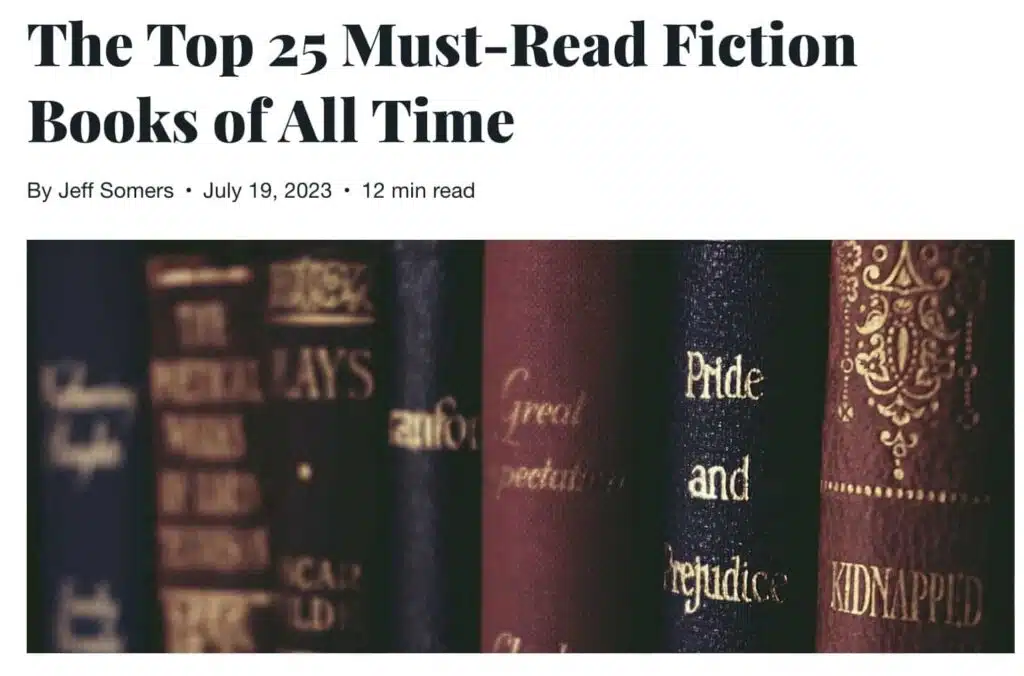Welcome to a world where information is served in bite-sized pieces, garnished with personality and humor. Within minutes, you can gain knowledge about captivating facts about sloths or uncover the hidden gems of your city never before known. Even mastering sourdough bread baking takes just six effortless steps! This begs one question: How to Write a Listicle?
These little packages of information wrapped up as numbered lists have become quite popular on the internet lately. So what are they precisely? And how do you create one that captures and captivates your readers? Let’s explore!
What are listicles?
Listicles are a form of article that comprises numbered lists, with each point being accompanied by a brief explanation. This format provides an easily accessible and captivating read for people who have little time to spare. Listicles are often misunderstood as superficial clickbait, but in reality, they have the potential to be informative, enjoyable, and intellectually engaging.
They can offer much more than just clickbait material. By combining “list” and “article,” the term “listicle” aptly describes the content that blends an article’s informative qualities with a simplified list format.
How to Write a Listicle
- Selecting Topics
- Opt for An Intriguing Title
- Structured Format
- Brief Explanations
- Captivating Tone
- Appealing Visuals
- Editing and Proofreading
Selecting Topics
When deciding on a topic, keep your audience in mind and select one that resonates with their interests and requirements.
- Discover current hot topics and generate listicles that relate to the ongoing discussions.
- Discover motivation in your area of focus: Investigate topics that allow you to demonstrate both your expertise and unique viewpoints.
Opt for An Intriguing title
Inform the reader about the topic and promise to deliver value.
- Use numbered titles for greater clarity: Increase click-through rates by utilizing formats such as “5 Ways to…” or “10 Best…”.
- Incorporate a splash of ingenuity: Employ clever wordplay, witty puns, or thought-provoking questions to stimulate curiosity.
Structured Format
Organize your list into numbered headings to facilitate quick scanning.
- Use subheadings for clarity. When dealing with complex ideas within a list item, it’s helpful to use subheadings as an organizational tool.
- Ensure a logical flow: Organize the items on your list logically to provide clear guidance and comprehension for the reader.
Brief Explanations
Provide one to three paragraphs of concise explanations for each item. Stay focused and avoid unnecessary details.
- To keep readers engaged, avoid monotony by using varied sentence structures, as it may distract the readers.
- Highlight key information within paragraphs using bullet points or bolding.
Captivating Tone
Write like you are talking to a friend; use natural language.
- Make your listicle unforgettable by adding anecdotes or humor to infuse personality.
- To establish a deeper connection with readers and share personal experiences and opinions.
Appealing Visuals
Breaking up text, highlighting key points with illustrations, and incorporating videos can enhance the visual appeal of the content.
- Infographics are designed to present intricate data in an aesthetically pleasing and easily understandable way.
- Memes and GIFs provide a dash of amusement and relatability, especially among the younger audience.
Editing and Proofreading
Check thoroughly for any errors, including typos, grammar mistakes, and inconsistent formatting, to ensure that your listicle is perfect.
- Listen to yourself reading and identify any awkward phrasing or unclear explanations.
- Request feedback from a friend or colleague to assess the clarity and engagement of your listicle.
Types of Listicles (with listicle examples)
- Numbered Lists
- Ranked Lists
- Timeline Lists
- Comparison Lists
- How-to guide Lists
- Round-up Lists
- Quiz-style Lists
- Bucket Lists
- Explainer Lists
Numbered Lists
This is the easiest kind of listicle form: ranked lists of ‘Top 10 Tips’ or ‘5 Ways to…’.

Ranked Lists
In these listicles, items are ordered based on specific ranking criteria, such as popularity, importance, or effectiveness. For example, “11 Best Paraphrasing Tools” or “Top 60 Free Article Submission Sites List”

Timeline Lists
Things are ordered chronologically, one thing after another: seconds, minutes, and hours; days, months, and years; the rise and fall of empires. It’s a helpful format for any topic in history or anything one wants to recount as a series of events or developments over time. For example,
- “Evolution of Technology: A Chronological Overview”
- “History of Ancient Egypt: Key Events and Pharaohs”

Comparison Lists
These listicles pit two or more items against each other to compare them: ‘iPhone vs. Android: Which one is better?’.

HOW-TO Guide
Lists that give instructions in steps or tips to perform a task or reach some goal. They often use numbered or bullet-point lists to break down the process into manageable steps.

Round-up Lists
We also have listicles, assembled from elsewhere or by category; they are compilations of items from various sources (for example, ‘10 Books to Read This Year’) or from more homogenous collections (for example, ‘15 Recipes for Your Summer Barbecue’).

Quiz-style Lists
These quiz-style listicles, which pose a series of questions or prompts, let the reader find out something about themselves: ‘Which Harry Potter Character Are You?’ or ‘Test: Can You Name the Countries of the World From the Outline?’ You might notice that the question representing this format differs: it doesn’t promise factual information.

Bucket Lists
Lists of experiences, goals, or places someone wants to accomplish or visit within their lifetime. They often inspire readers to create their lists and pursue their dreams.
Examples of bucket lists:
- “50 Experiences to Add to Your Travel Bucket List”
- “25 Things to Do Before You Turn 30”
- “My Ultimate Adventure Bucket List: 100 Dreams to Fulfill”
Explainer Lists
These listicles break down complex topics or concepts into simplified, easy-to-understand points. They’re useful for educating readers on a particular subject matter.
- “10 Common Investing Terms Explained”
- “A Beginner’s Guide to Blockchain Technology: 7 Key Concepts”
- “Understanding Climate Change: 5 Facts You Need to Know”

Final Words
Congratulations! You now possess the knowledge and resources necessary on how to write a listicle that enchants, educates, and amuses your readers. Don’t forget that listicles are incredibly versatile. They can be amusing, educational, motivating, or even challenging. Therefore, don’t hesitate to play around with them and add your flair—make it fun!
To create a listicle, ensure that you present valuable information in an enjoyable and effortless format. Always consider your audience’s preferences, add some personal flair, and try out diverse techniques to identify the ones most suitable for you!

